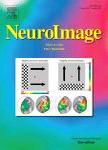版权所有:内蒙古大学图书馆 技术提供:维普资讯• 智图
内蒙古自治区呼和浩特市赛罕区大学西街235号 邮编: 010021

作者机构:Univ London Imperial Coll Sci Technol & Med Dept Math Stat Sect London SW7 2AZ England Univ Warwick Dept Stat Coventry CV4 7AL W Midlands England Univ Warwick Warwick Mfg Grp Coventry CV4 7AL W Midlands England
出 版 物:《NEUROIMAGE》 (神经图像)
年 卷 期:2010年第53卷第3期
页 面:1147-1159页
核心收录:
学科分类:1002[医学-临床医学] 1001[医学-基础医学(可授医学、理学学位)] 1010[医学-医学技术(可授医学、理学学位)] 1009[医学-特种医学] 10[医学]
基 金:EPSRC GlaxoSmithKline Clinical Imaging Center National Institutes of Health [U01 AG024904, P30 AG010129, K01 AG030514] National Institute on Aging National Institute of Biomedical Imaging and Bioengineering Dana Foundation MRC [G0900908] Funding Source: UKRI
主 题:Brain/anatomy & histology Brain Mapping/methods Brain Mapping/methods Genome-Wide Association Study Genotype Humans Image Processing, Computer-Assisted Magnetic Resonance Imaging Models, Neurological Models, Statistical Phenotype Polymorphism, Single Nucleotide Quantitative Trait, Heritable Regression Analysis ROC Curve
摘 要:There is growing interest in performing genome-wide searches for associations between genetic variants and brain imaging phenotypes. While much work has focused on single scalar valued summaries of brain phenotype, accounting for the richness of imaging data requires a brain-wide, genome-wide search. In particular, the standard approach based on mass-univariate linear modelling (MULM) does not account for the structured patterns of correlations present in each domain. In this work, we propose sparse reduced rank regression (sRRR), a strategy for multivariate modelling of high-dimensional imaging responses (measurements taken over regions of interest or individual voxels) and genetic covariates (single nucleotide polymorphisms or copy number variations), which enforces sparsity in the regression coefficients. Such sparsity constraints ensure that the model performs simultaneous genotype and phenotype selection. Using simulation procedures that accurately reflect realistic human genetic variation and imaging correlations, we present detailed evaluations of the sRRR method in comparison with the more traditional MULM approach. In all settings considered, sRRR has better power to detect deleterious genetic variants compared to MULM. Important issues concerning model selection and connections to existing latent variable models are also discussed. This work shows that sRRR offers a promising alternative for detecting brain-wide, genome-wide associations. Crown Copyright (c) 2010 Published by Elsevier Inc. All rights reserved.